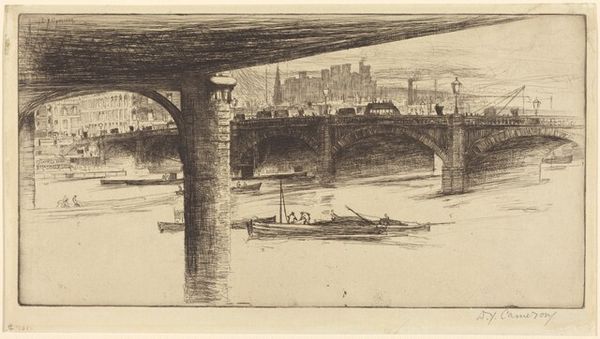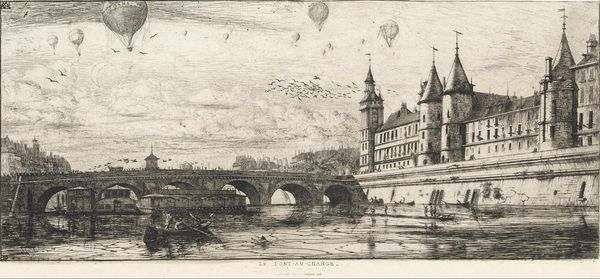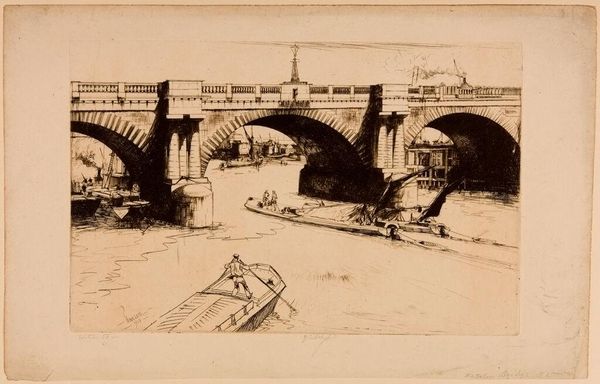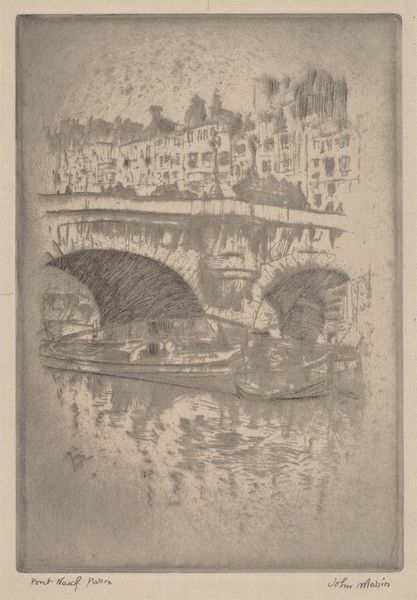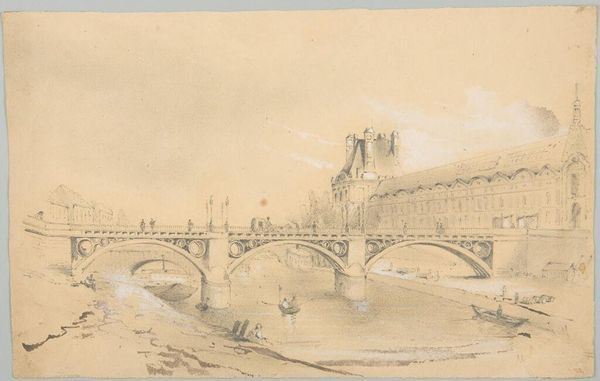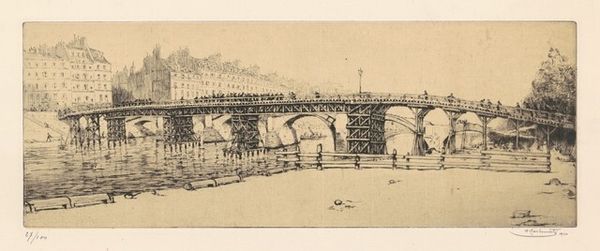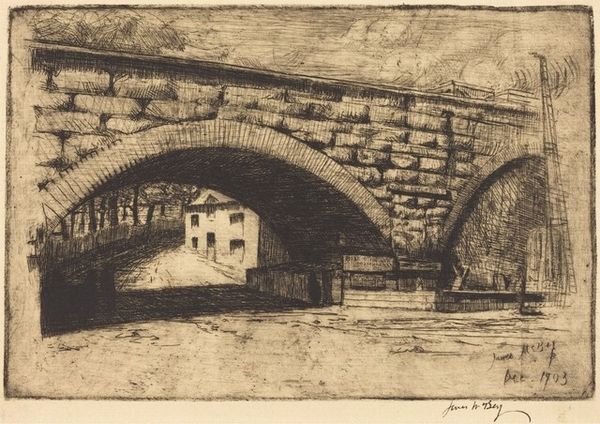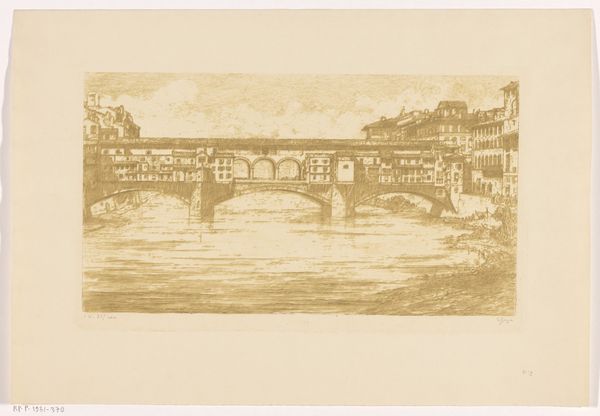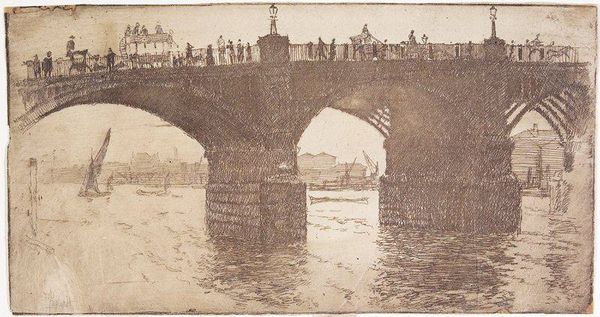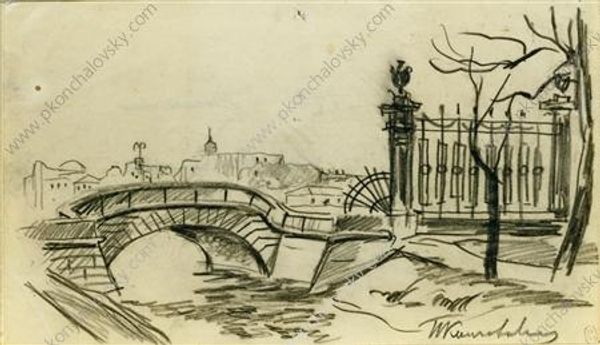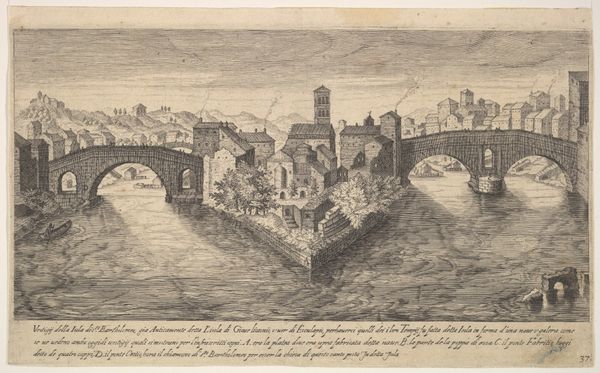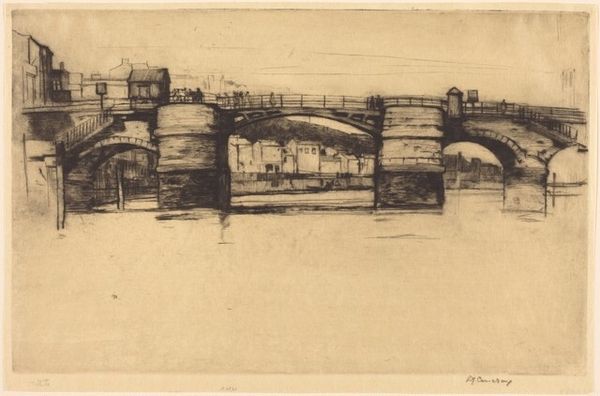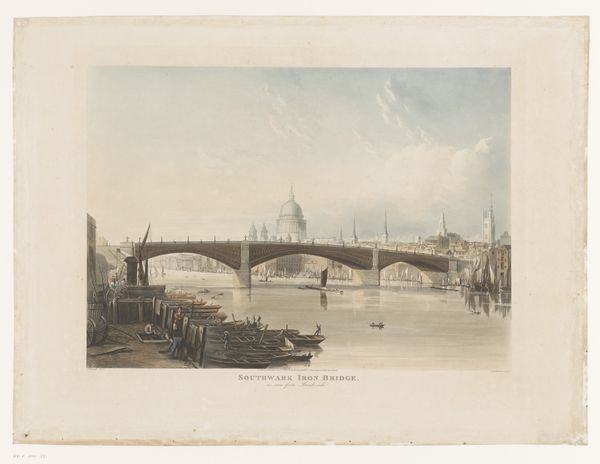
Copyright: National Gallery of Art: CC0 1.0
Editor: Here we have Caroline Helena Armington's "The Seine, Paris" from 1924, created using etching. The lines create such an airy and light cityscape, with all this industry suggested in the background! What catches your eye in this work? Curator: It’s precisely that implied labor that interests me. The etching process itself – the physical act of incising lines into a metal plate – speaks volumes. Consider the labour needed to produce the plate, to operate the printing press. This contrasts sharply with the traditional “artistic genius” narrative often applied to Impressionism. Editor: That’s interesting. So you're saying we shouldn’t just focus on the pretty scene? Curator: Not at all! Instead, let's think about *how* that scene came into being. The dense lines – look at the bridge – they suggest a sustained effort, a negotiation between artist and material. Where does craft end and "fine art" begin, and why do we even maintain that boundary? What do the barges suggest, in terms of industry along the Seine at that time? Editor: I guess I never considered the work *behind* the work. Focusing on the technique, I see how much deliberate action went into creating those delicate lines. Curator: Exactly! And what of the paper it's printed on? The ink itself? All commodities within a network of production and consumption. Think about the market for these kinds of Parisian views at the time – who was buying them and why? It speaks to the artwork’s context as much as its content. Editor: So much to think about beyond just the surface image. Thanks, that really changed how I see this piece! Curator: My pleasure. Paying attention to material realities encourages a richer appreciation for the labour involved in artistic creation.
Comments
No comments
Be the first to comment and join the conversation on the ultimate creative platform.
